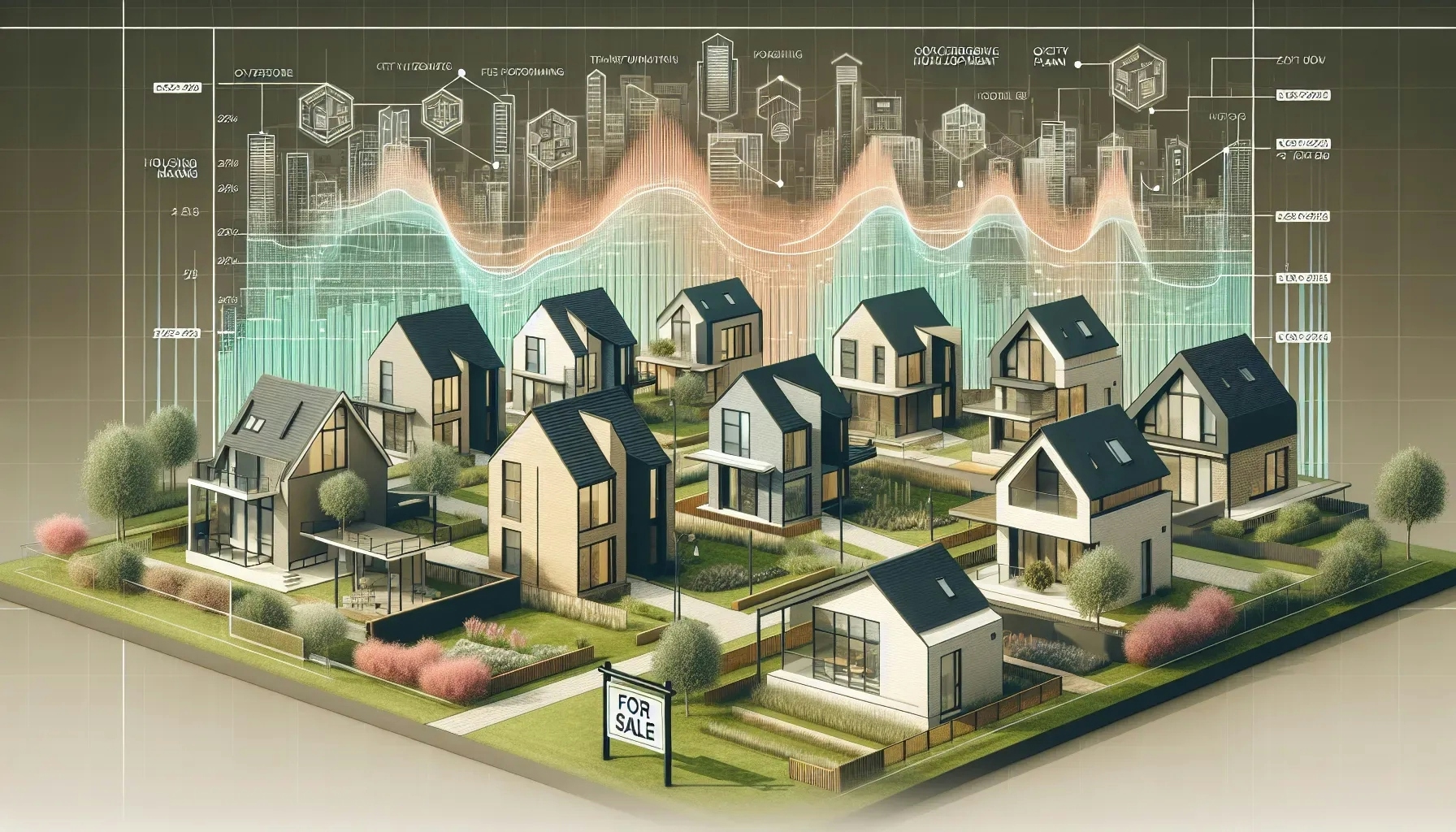Welcome to our deep dive into the complex world of housing market trends and government regulations. This blog post will guide you through the intricate dance of market dynamics and policy impacts. We'll explore the current trends shaping the housing market, how government regulations influence these trends, and what this means for potential homeowners and investors.
Understanding the Housing Market: Current Trends
The housing market is a dynamic entity, constantly evolving in response to various factors. One of the most prominent trends we're currently witnessing is the rise in house prices. This increase is largely due to a supply-demand imbalance. More people are looking to buy homes than there are homes available, driving prices up.
Another trend shaping the housing market is the shift towards suburban living. With the advent of remote work, many people are opting for homes in suburban areas over crowded city centers. This shift is causing a surge in demand for suburban properties, further contributing to the rise in house prices.
The low-interest-rate environment is another significant trend. Central banks around the world have slashed interest rates to stimulate economic activity amidst the pandemic. This move has made mortgages more affordable, encouraging more people to buy homes and driving up demand.
The Role of Government Regulations in the Housing Market
Government regulations play a crucial role in shaping housing market trends. These regulations can influence the supply and demand of housing, affecting house prices.
Zoning laws are a prime example of this. These laws dictate what can be built where, often limiting the supply of housing in certain areas. This limitation can drive up house prices in these areas.
Building codes and standards also impact the housing market. These regulations can increase the cost of construction, which can, in turn, increase house prices.
On the demand side, government policies like tax incentives for homeowners can stimulate demand for housing. For instance, the mortgage interest deduction in the U.S. makes owning a home more affordable, encouraging more people to buy homes.
The Impact of Government Regulations on Housing Market Trends
Government regulations not only shape housing market trends but also respond to them. For instance, in response to the rising house prices, governments may implement policies to increase the supply of affordable housing.
One such policy is inclusionary zoning, which requires developers to include a certain percentage of affordable units in their projects. This policy aims to increase the supply of affordable housing and curb rising house prices.
Another policy response to housing market trends is changes in interest rates. Central banks may raise interest rates to cool down an overheated housing market. This move makes mortgages more expensive, reducing demand for housing and potentially stabilizing house prices.
The Interplay Between Housing Market Trends and Government Regulations
The relationship between housing market trends and government regulations is a complex one, characterized by a constant interplay. Market trends influence government policies, which in turn shape market dynamics.
For instance, the shift towards suburban living has prompted governments to invest more in suburban infrastructure. This investment can further stimulate demand for suburban properties, reinforcing the trend.
Similarly, the rise in house prices may prompt governments to relax zoning laws or offer tax incentives for construction, increasing the supply of housing and potentially stabilizing prices.
What This Means for Homeowners and Investors
Understanding the interplay between housing market trends and government regulations is crucial for homeowners and investors. This knowledge can help them make informed decisions and navigate the housing market more effectively.
For homeowners, understanding these dynamics can help them choose the right time to buy or sell. For instance, if they know that government regulations are likely to increase the supply of housing and stabilize prices, they may choose to wait to buy.
For investors, this knowledge can inform their investment strategies. For instance, if they know that a shift towards suburban living is likely to continue, they may choose to invest in suburban properties.
Looking Ahead: Future Trends and Regulations
As we look ahead, several trends and regulations are likely to shape the housing market. Remote work is likely to continue influencing the shift towards suburban living. Climate change regulations may also start playing a more prominent role, influencing building codes and standards.
On the policy front, governments are likely to continue grappling with the challenge of affordable housing. Policies like inclusionary zoning and tax incentives for construction are likely to remain key tools in this effort.
Wrapping Up: Housing Market Trends and Government Regulations
In conclusion, the dance between housing market trends and government regulations is a complex one. Understanding this interplay is crucial for navigating the housing market, whether you're a potential homeowner or an investor. As we look ahead, we can expect this dance to continue, shaped by trends like remote work and regulations aimed at tackling the challenge of affordable housing.

